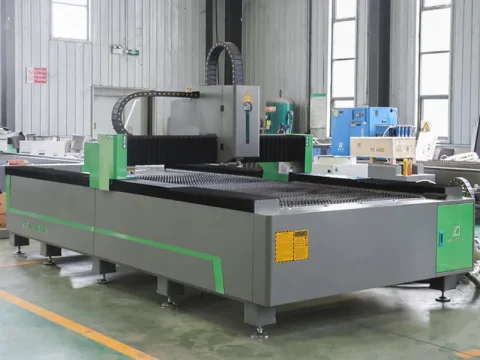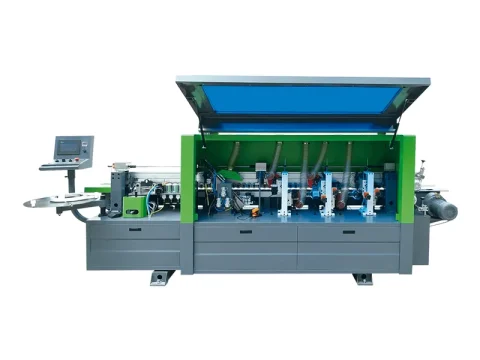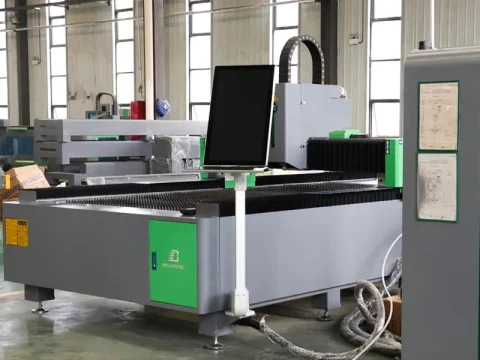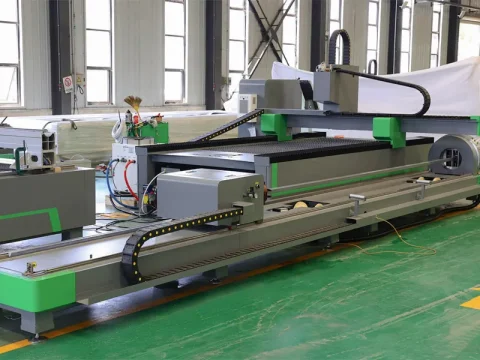CNC Router Spindle Cooling Methods: Air-Cooled vs Water-Cooled – Pros, Cons, and Applications
In the world of CNC machining, the spindle is the heart of a router. Its performance directly affects cutting precision, surface finish, and production efficiency. One often overlooked factor influencing spindle performance is cooling method. CNC routers typically use either air-cooled spindles or water-cooled spindles. Understanding the pros, cons, and optimal applications of each cooling type can help manufacturers select the right solution for their production needs.
In this blog, we will explore the differences between air-cooled and water-cooled spindles, discuss their advantages and limitations, and provide guidance on which types of materials and operations each is best suited for.
What is Spindle Cooling and Why It Matters
CNC router spindles generate significant heat during high-speed rotation. Excess heat can:
-
Reduce bearing life
-
Cause thermal expansion and reduce machining precision
-
Lead to premature spindle failure
Spindle cooling is essential to maintain stable operating temperature, ensure consistent performance, and extend the lifespan of the spindle. Both air and water cooling systems are widely used in modern CNC routers, each with unique benefits and limitations.
Air-Cooled Spindles
Air-cooled spindles use an internal fan to circulate air through the spindle housing, dissipating heat generated during operation. They are simpler in design, lighter, and often more cost-effective than water-cooled models.
Advantages of Air-Cooled Spindles
-
Compact and Lightweight – Easier to integrate into small and medium CNC routers.
-
Lower Maintenance – No coolant system or external pumps required.
-
Cost-Effective – Lower initial cost compared to water-cooled spindles.
-
Sufficient for Short or Intermittent Cutting – Ideal for materials that do not require continuous heavy-duty machining.
Limitations of Air-Cooled Spindles
-
Less effective at dissipating heat during long-duration, high-load operations.
-
Higher spindle temperature may affect cutting precision over extended periods.
-
Noise from internal fans can be noticeable in the workshop environment.
Best Applications for Air-Cooled Spindles
Air-cooled spindles are particularly suitable for:
-
Woodworking: MDF, plywood, solid wood, and similar materials where heat generation is moderate.
-
Foam and Plastic: Lightweight materials with lower cutting resistance.
-
Engraving and Small Components: Short cycles and intermittent cutting operations.
For small to medium-sized CNC routers used in cabinet making, sign-making, or decorative wood projects, air-cooled spindles offer a perfect balance between cost and performance.
Water-Cooled Spindles
Water-cooled spindles circulate coolant (usually water mixed with anti-corrosion agents) through the spindle housing. This system is more efficient at heat dissipation, especially during long, high-speed, or heavy-duty cutting operations.
Advantages of Water-Cooled Spindles
-
Superior Heat Dissipation – Keeps spindle temperature stable even during continuous cutting.
-
High Precision – Reduced thermal expansion maintains cutting accuracy for extended periods.
-
Low Noise Operation – Absence of an internal fan results in quieter operation.
-
Suitable for Heavy-Duty Applications – Ideal for cutting metals or abrasive materials.
Limitations of Water-Cooled Spindles
-
Higher initial cost due to pumps, tubing, and coolant system.
-
Requires additional maintenance: checking water flow, preventing leaks, and avoiding corrosion.
-
Slightly heavier, which may require more robust mounting in some CNC routers.
Best Applications for Water-Cooled Spindles
Water-cooled spindles excel in:
-
Aluminum and Non-Ferrous Metals: High-speed cutting with precision.
-
Continuous Production: Long-duration machining in industrial manufacturing.
-
Thick Materials or High-Resistance Cuts: MDF, acrylic, solid wood panels with deep cuts.
-
Complex 3D Contouring: 5-axis or multi-axis CNC routers requiring stable spindle temperature.
In factories producing furniture, metal parts, or high-volume custom components, water-cooled spindles ensure consistent precision and protect the spindle from overheating, which can save costs over time.
Choosing Between Air and Water Cooling
When selecting a spindle cooling method, consider the following factors:
-
Material Type – Softer materials like wood and plastic usually do not require water cooling. Metals and high-density composites benefit from water-cooled spindles.
-
Cutting Duration – For intermittent or short-duration cuts, air cooling may suffice. Continuous production favors water-cooled spindles.
-
Precision Requirements – High-precision applications, especially in aerospace, automotive, or metal mold manufacturing, often require water-cooled spindles.
-
Budget and Maintenance – Air-cooled spindles have lower upfront costs and maintenance, while water-cooled spindles require a higher initial investment but offer longer-term performance benefits.
By evaluating material, production scale, and precision requirements, manufacturers can choose the spindle cooling type that optimizes efficiency and minimizes operational risks.
Conclusion
Both air-cooled and water-cooled CNC router spindles have their place in modern manufacturing. Air-cooled spindles are ideal for lightweight, short-duration applications like wood, plastic, and foam processing, offering cost-effective and low-maintenance operation. Water-cooled spindles, however, are indispensable for heavy-duty, continuous, and high-precision cutting, particularly for aluminum, non-ferrous metals, and industrial production environments.
Investing in the right spindle cooling method can enhance machining precision, improve surface finish, extend spindle lifespan, and reduce production downtime. For manufacturers seeking to balance performance, cost, and maintenance, understanding the differences between air and water cooling is key to optimizing CNC router operations.
By implementing the appropriate spindle cooling technology, CNC routers can achieve high-speed, precise, and reliable performance, whether producing decorative wood panels, aluminum components, or industrial-grade metal parts.
| Feature / Aspect | Air-Cooled Spindle | Water-Cooled Spindle |
|---|---|---|
| Cooling Method | Internal fan circulates air | Circulates water/coolant through spindle housing |
| Heat Dissipation Efficiency | Moderate; suitable for short or intermittent cuts | High; maintains stable temperature for long or heavy-duty cuts |
| Noise Level | Higher due to internal fan | Lower; quieter operation |
| Maintenance | Minimal; no external system needed | Requires pump, tubing, and coolant maintenance |
| Initial Cost | Lower; cost-effective | Higher; additional components increase cost |
| Weight | Lighter; easier to integrate | Heavier; may require stronger mounting |
| Best Applications | Wood, foam, plastics, short/intermittent cuts | Metals (aluminum, non-ferrous), continuous heavy-duty cutting, high-precision work |
| Advantages | Compact, low-cost, simple to maintain | Superior cooling, stable precision, suitable for high-speed or long-duration machining |
| Limitations | Less effective for long/high-load operations, may affect precision | Higher upfront cost, requires maintenance, heavier |







